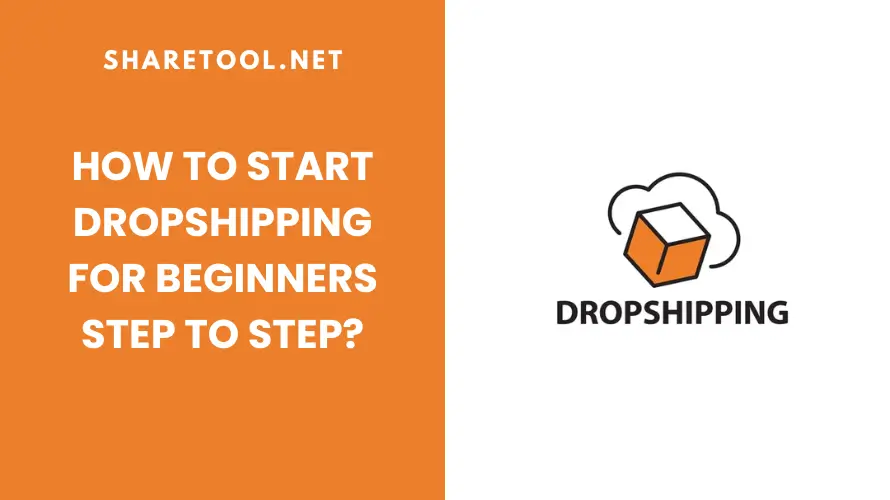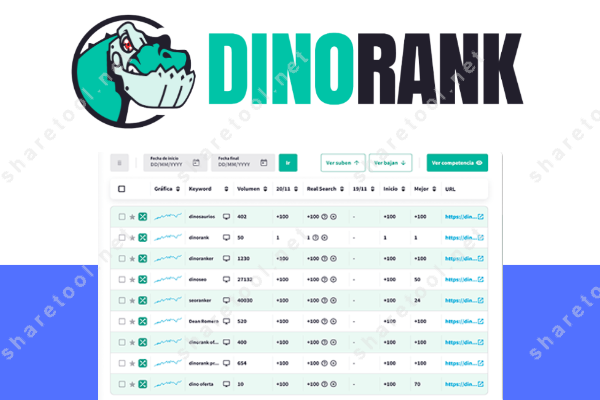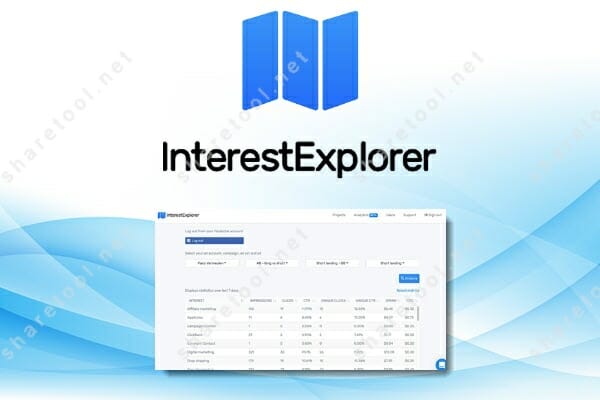How To Start Dropshipping For Beginners Step To Step?
If you’ve been thinking about launching your own dropshipping company but are unsure of how to start dropshipping, you’ve come to the correct spot. Regardless of your level of experience, we’ll walk you through every crucial step to get started with dropshipping.
A product selection, business setup, legal issues, and (of course) those crucial sales are all on your mind.
How To Start Dropshipping For Beginners Step To Step
Starting a dropshipping business involves careful planning and execution. Here are seven essential steps to start a dropshipping business:

1. Choose The Right Dropshipping Product
2. Find A Dropshipping Supplier
3. Set Up An Online Dropshipping Store
4. Optimize Product Listings
5. Marketing Dropshipping Store
6. Manage Orders & Customer Service
7. Analyze & Scale Your Business
Let’s begin!
Choose The Right Dropshipping Product
Selecting the appropriate dropshipping product is a crucial step that impacts your company’s performance. Start by looking into popular products utilizing resources like AdSpy, Minea, or Google Trends to find goods with steady demand and little competition.

Seek out goods that provide unique value, have a devoted following, or address an issue. Steer clear of oversaturated markets unless you can set yourself apart with superior branding, price, or marketing techniques.
To guarantee long-term profitability, take into account additional elements including transportation expenses, supplier dependability, and possible profit margins. A well-chosen product improves your chances of generating revenue and successfully growing your company.
Find A Dropshipping Supplier
To guarantee product quality, prompt shipping, and a positive client experience, it is essential to find a trustworthy supplier. Collaborate with reliable vendors on websites such as AliExpress, CJ Dropshipping, or Spocket, and check their standing by reading reviews and placing orders for samples to gauge quality.

Seek out vendors who provide excellent communication, quick turnaround times, and competitive price. A trustworthy supplier guarantees client happiness, cuts down on refund demands, and helps to minimize delays.
Having a strong relationship with your supplier can also result in priority service, unique offers, and lower prices, which will provide your dropshipping company a competitive advantage.
Set Up An Online Dropshipping Store
One of the most important steps in starting a dropshipping business is setting up your online store. Select an eCommerce platform that offers critical integrations and user-friendly interfaces, such as Shopify, WooCommerce, or BigCommerce.

Make sure your store is mobile-friendly and has a neat, professional layout for simple navigation. To increase trust and boost conversions, include attractive product photos, enticing descriptions, and safe payment mechanisms.
Improve user experience and search rankings by optimizing your business for speed and SEO. A well-organized store builds reputation, draws clients, and lays the groundwork for sustained dropshipping success.
Optimize Product Listings
In order to draw clients and boost conversions in your dropshipping business, you must optimize your product listings. Writing concise, engaging product descriptions that emphasize important features and cater to customer pain areas should be your first step.

Utilize top-notch photos and videos to present the product from many perspectives, increasing engagement and confidence. Add pertinent keywords to titles, descriptions, and tags to raise your site’s visibility and search engine ranks.
Incorporate trust badges and customer reviews to increase trustworthiness and lessen buyer hesitancy. A well designed product listing gives you a competitive edge in the dropshipping market and enhances traffic and sales.
Marketing Dropshipping Store
Effective dropshipping store marketing necessitates a multi-channel strategy that makes use of both organic and paid tactics, as well as strong marketing technologies to optimize reach and conversions.
To start, use Facebook Ads Manager, Google Ads, and TikTok Ads Manager to conduct highly targeted ad campaigns that target demographics, interests, and behavior in order to draw in new customers.
Create high-converting ad creatives, evaluate competition advertisements, and find trending products by using ad intelligence tools like AdSpy, Minea, or BigSpy.

Make sure your store shows up in Google search results for pertinent product queries by optimizing your website with Ahrefs, SEMrush, or Ubersuggest to perform keyword research, monitor rankings, and enhance SEO. Use BuzzSumo to get ideas for viral content and produce interesting blog entries or social media posts that naturally increase traffic.
Integrate Klaviyo or Omnisend for automated email marketing that sends customized product recommendations, abandoned cart alerts, and promotional offers to improve customer retention and conversions. To increase the likelihood that visitors who looked at your products but did not finish their purchase will become customers, use Recart or RetargetApp to retarget them.
Use Hootsuite or Buffer to schedule content across platforms and take advantage of social media marketing to engage your audience consistently. Work together with influencers through TikTok Creator Marketplace, Heepsy, or Upfluence to increase brand recognition and draw in more potential clients.
Manage Orders & Customer Service
Keeping a successful dropshipping business requires managing orders and offering top-notch customer care. Utilize order management platforms such as Spocket, CJ Dropshipping, or DSers (for AliExpress) to effectively track shipments and automate order fulfillment.
Reduce the number of customers who ask about the status of their deliveries by integrating tracking technologies like AfterShip or 17Track and making sure they receive real-time information on their orders. Create a helpdesk system with Zendesk, Freshdesk, or Gorgias for customer service to manage questions, refunds, and grievances with ease.
Use AI chatbots such as Tidio or LiveChat to automate responses in order to increase customer happiness and offer immediate support. To foster trust and promote repeat business, keep your refund and return policies explicit and address problems as soon as they arise.
A well-run order and customer support system improves client satisfaction, increases store legitimacy, and propels your dropshipping company’s long-term success.
Analyze & Scale Your Business
For long-term growth and increased profitability, it is essential to analyze and scale your dropshipping business. Track website traffic, consumer behavior, and conversion rates with analytics tools like Google Analytics, Facebook Pixel, and Hotjar to determine what is effective and where changes are required.
To improve decision-making, track sales trends, customer lifetime value, and ad performance with Shopify Analytics or Triple Whale. Increase ad budgets in Facebook Ads Manager, Google Ads, and TikTok Ads Manager to scale profitable products. Use AdSpy or Minea to test new audiences and creatives.
Use tools like Helium 10 or Jungle Scout to find high-demand products with great profit margins and strategically expand your product line. Use Zapier to automate processes and expedite chores like transferring marketing data and orders between platforms.
Finally, use Klaviyo or Omnisend to improve customer retention by introducing upsells, loyalty programs, and customized email marketing. You can scale effectively, increase earnings, and sustain long-term success in the cutthroat dropshipping industry by regularly assessing and improving your company.
Should You Start A Dropshipping Business?
Pros and Cons of starting your own business
Pros of starting your own business
- Low Startup Costs: This company model is inexpensive because there is no need to invest in inventory or warehouse storage.
- Simple to Start: Shopify, WooCommerce, and Wix are just a few of the platforms that make setup easy and don’t require technical expertise or manufacturing experience.
- Flexibility & Scalability: You can operate your company from any location and quickly expand your product line without worrying about logistics.
- Sell a wide range of popular products without having to worry about stocking or unsold inventory thanks to our extensive product selection.
- Lower Risk: There is no inventory risk up front because you only buy things after a transaction.
Cons of starting your own business
- Low Profit Margins – High competition can lead to price wars, reducing profit per sale.
- Shipping & Supplier Issues – Slow delivery times, unreliable suppliers, and stock shortages can lead to unhappy customers.
- High Competition – Many dropshipping stores sell the same products, making differentiation difficult.
- Customer Service Challenges – Since you don’t control fulfillment, handling returns, refunds, and complaints can be complicated.
- Dependence on Ads – Paid advertising (Facebook, Google, TikTok) is often necessary to generate traffic, which can be costly.
How much do you need to start dropshipping?
- E-commerce Platform: The majority of people use a paid e-commerce platform. These offer different options, often ranging from $30 to $300 per month.
- Domain: Typically, between $10 and $20 per year.
- Themes: You have the option of starting with a premium or free theme. Typically, the premium themes cost around $350.
- Applications: For tasks like email marketing, reviews, and SEO tools, you’ll probably need to use a variety of applications. The better (paid) ones can cost $5 to $50 per month or more, while some are free.
- Design: Hiring a professional graphic designer can be more expensive if you’re not doing your own website design.
- Product samples: It is strongly advised to purchase a sample prior to beginning dropshipping a product.
- Supplier: A few providers provide subscription options that run on a monthly basis. These typically cost around $30 per month, though they can vary greatly.
- Initial marketing: For your first sales, you may choose to spend money on sponsored advertising. For platforms like Facebook or Google Ads, a budget of $200 to $500 is a decent place to start.
Conclusion: How To Start Dropshipping
If done well, launching a dropshipping business can be a thrilling and lucrative endeavor. You can create a successful online business by following all the steps, from selecting the best product and locating a trustworthy supplier to establishing your store, improving product listings, and doing efficient marketing.
Long-term growth requires managing orders, offering top-notch customer service, and using data analysis to scale your company. Dropshipping is an excellent choice for novices due to its inexpensive initial costs and flexibility, despite its drawbacks, which include supplier problems and competition.
Your dropshipping store can become a successful eCommerce brand if you have the correct resources, perseverance, and ongoing education. Now is the time to act and get your dropshipping business up and running!
- Top 5+ Best Push Ads Spy Tools For Digital Marketers
- 5+ Best Google Ads Tools For Local Businesses To Drive More Leads
- VidAlta V2 Review – The Best All-in-one Platform for Video Makers
- Top 5+ Best Everbee Alternatives For Etsy Shop Optimization
- 5+ Best Social Media Content Creation Tools For Freelancers To Save Time And Impress Clients








